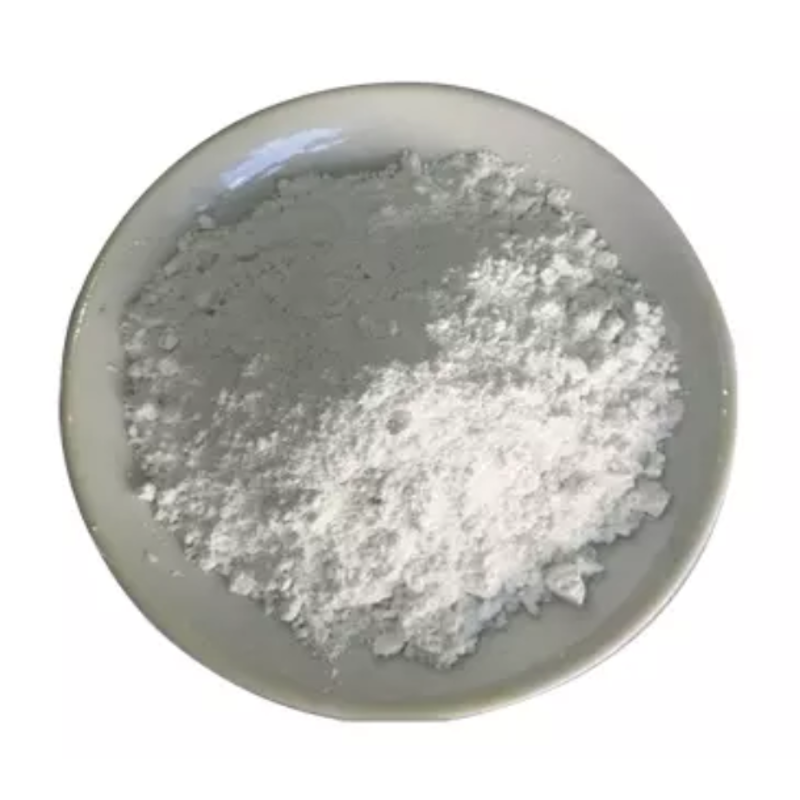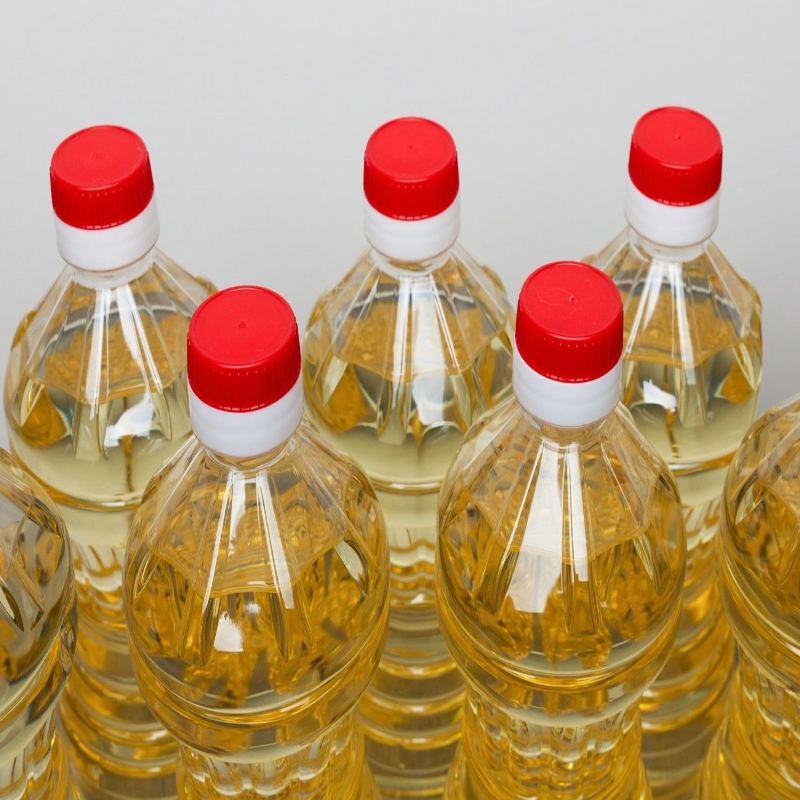Effect of feeding enzymes on the production performance of weaned piglets.
-
Last Update: 2020-07-29
-
Source: Internet
-
Author: User
Search more information of high quality chemicals, good prices and reliable suppliers, visit
www.echemi.com
OA_show ('533');Abstractadding feed enzymes can not only effectively eliminate the harmful effects of anti-nutrient factors and toxins in feed, but also promote the decomposition of feed nutrients digestion and absorption and utilization, thus greatly improving the utilization rate of conventional feed and promoting animal growthIn order to verify the actual effect of enzyme preparation in large-scale pig farming, 60 45-day-old grown-up binary hybrid weaned piglets were randomly divided into two groups, and the test group added a compound feeding enzyme preparation 0.1% on the basis of the control group's daily grain to observe the feeding effect of the enzyme preparation in the weaned pig corn soybean meal-type dietThe experimental results showed that the daily weight gain ratio was 8.84% higher than that of the control group, and the feed conversion rate increased by 9.95%keyword feeding enzyme preparation swerthing pig production performance1 introduction1.1 Introduction to the development of feed enzyme preparations in the 1920s and 1950s, people gradually realized the role of enzymes in animal nutrition, to the 80's, due to the rapid development of biotechnology and fermentation industry to make mass production of low-cost enzyme preparations possibleIn 1984, the Finns added fermented enzyme preparations for brewing to barley-based diets, significantly increasing the nutritional value of the diet, marking the beginning of the commercialization of enzyme preparations in the feed industrySince then, the application of enzyme preparationins in feed research has been carried out in a comprehensive manner, in the 1990s feeding enzyme preparations began to be introduced into ChinaThe application of enzyme preparation in animal production can not only improve the digestion and utilization rate of feed, improve the production performance of animals, but also reduce the nitrogen and phosphorus content in excreta, protect water and soil from pollution, so the feed enzyme preparation as a kind of high-efficiency, non-toxic side effects of environmentally friendly "green" feed additives will have a very broad application prospects1.2 The classification of feed enzymes can be divided into proteases, amylase, lipase, glucotose, beta-glucanase, beta-glucotose, cellulase, ciutonicase, pectinase and phytoase, depending on the substrateAccording to whether the animal itself can secrete the production and can be divided into the feeding enzyme into digestive enzymes and non-digestion enzymes, digestive enzymes refers to the animal's own secretion of protease, amylase, lipase, etc;1.3 Objectiveselect and match appropriate enzyme species according to the specific circumstances of reference materials and tests to test their effects on the average daily weight gain, feed conversion rate and diarrhea frequency of piglets2 Materials and Methods2.1 Test pigs selection and groupingchoose 45 days old, weight in 14 kg or so grow ingenomic piglets 60 head (male mother half), randomly divided into two groups, each group of 30 head (15 male, 15 female)2.2 Trial time30d for the test period2.3 Selection of enzymesthe current research and application of adding enzymes to feed mainly shows results in two aspects: First, supplementing the piglets under certain conditions of their own digestive enzyme secretion is insufficient to prevent the decline of production performance; Therefore, in order to achieve the best results in the use of compound enzymes, we must consider from the type of diet and the physiological characteristics of pigletsthe main anti-nutritional factors in corn-soy meal-type diet are xylitose (corn content 4.3%), pectin (14.0% content in soybean meal), ethyl glycosaine (1.85% to 2.3% content in soybean meal), etc., e-type glycosa also inhibits the absorption of glucose in the small intestine, so for this type of diet to add non-digestion enzymes, the main species of glutase, xyliase, xylyenzymebecause piglets mainly digestive enzyme synthesis, secretion obviously insufficient, resulting in indigestion, nutrients can not be fully digested by endogenous enzymes, undigested nutrients reached the intestinal section is also easy to be used by harmful microorganisms to cause nutritional diarrhea, so for weaning piglets themselves characteristics of the appropriate supplement of the digestive enzymes is alpha-amylase, acidic proteasethe main ingredients and active content of the compound enzyme preparation used in thistest are: xylitose 5000U/g, pectin enzyme 1000U/g, glutuclase 800U/g, cellulase 640U/g, alpha-amylase 240U/g, acid protease 80U/g, adding 0.1% (mass fraction) to the base grain2.4 Test Methodthe average weight of the control group and the test group was: (13.95 x 1.56) kg, (13.95 x 1.21)kg, the weight of the two groups of pigs, feed consumption by t-test is not significant difference (P.05), entered the formal test, to the end of the testThe control group fed the base daily grain, and the test group added 0.1% of the compound enzyme preparation to the base dietdetermine the composition and nutritional levels of basic diets (see table 1)Table 1 Basic diet composition and nutritional levelbasic diet composition the nutritional level of corn 65 digestion energy (MJ/kg) 13.03 rice 8 calcium 0.66 soybean meal 22 phosphorus 0.55 imported fishmeal 1 lysin e 0.58 2.5 test indicator (1) survival rate: from the official test to the column of survival; (2) the amount of food: daily feed consumption; (3) weight: the beginning of the test, the end of the test heavy, (4) the production period: from the official test to the column time; (5) the incidence of pig's yellow white, diarrhea and other diseases, mortality, etc 2.6 Statistical Analysis of Data to compare the indicators obtained in the experiment with a biostatistical comparison, and to analyze the relevant situation of each trial group and the control group piglets 3 Test Results 3.1 Test Period Weight Gain Piglet test period weight gain, see Table 2 Table 2 Piglet test period weight gain results d, kg, % refer s to the test group test group test group 30 30 test period 30 30 average starting weight 13.95 1.5 6 1 average final weight 26.85 to 2.85 28.00 to 2.79 average weight gain 12.90 14.05 average daily weight gain (g) 430 468 100 108.84 from table 2: the average daily weight gain ratio of the test group increased by 8.84 percent The significance test was significantly different from the control group (P 0.05) 3.2 Harvesting and feed conversion rate test report results see Table 3 Full-term feeding volume and feed conversion rate d, kg, % group head time total consumption total weight gain comparison control group 30 30 1743.0 774.0 2.252 100 test group 30 30 1710.0 843.0 2.028 90.05 from table 3: the test group increased the total feed conversion rate by 9.95% compared to the control group 3.3 The rate of diarrhea, death and health of pigs the test group of pigs skin bright, red skin, strong appetite, feeding speed is higher than the control group The pig droppings in the control group were thin, sticky and thin were more serious than those in the test group The diarrhea rate and death rate of the test pig are shown in Table 4 Table 4 The diarrhea frequency and death rate of pigs d, % group head test time diarrhea frequency diarrhea frequency comparison the death rate control group 30 30 10 0 100 test group 30 30 1 10 0 from table 4 can be seen 4 Analysis and Discussion 4.1 test showed that adding non-digestion enzyme sage agents to feed is conducive to the decomposition of anti-nutrient factors in feed, indirectly promoting the digestion and utilization of nutrients, and improving the digestion rate of feed At the same time, piglets weaned after a few weeks of digestive enzyme secretion is insufficient, affecting piglet's digestion ability, the addition of exogenous digestive enzyme preparations to improve starch, protein and other nutrients digestion and absorption rate, promote the development of the digestive tract, to help digestion, absorption of various nutrients, to promote growth Under the action of compound enzyme preparation, nutrients are fully absorbed in the small intestine, after the fermentation of intestinal nutrients is reduced, pathogenic bacteria are reduced, and thus the frequency of diarrhea is significantly reduced 4.2 In this experiment, according to the corn-so-so-meal-type diet contains more pectin, increased the pectin enzyme, did not use glucotose, the test showed that the effect and data can be better reduced compared with the drugc's gastrointestinal adhesion viscose the addition of 4.3 enzyme synopsis has a dose effect, in a certain range, with the increase of the increase of the amount of added, improve the production performance of pigs and feed compensation effect is enhanced But when the amount added exceeds a certain level, pig production performance and feed compensation decline This experiment selected the amount of enzyme preparation added in pig production and determined the compound enzyme preparation according to the production basis, the type of diet and nutritional level, and the results showed that adding 0.1% of the compound enzyme preparation to the piglet's daily grain can improve the daily weight gain and feed conversion rate 5 Conclusion adding 0.1% of this compound enzyme formulation to weaned pig corn-so-meal-type diet can effectively improve piglet's daily weight gain and feed conversion rate, reduce feed cost, and can be popularized and applied in actual production Abstract adding feed enzymes can not only effectively eliminate the harmful effects of anti-nutrition factors and toxins in feed, but also promote the decomposition digestion and absorption and utilization of feed nutrients, thus greatly improving the utilization rate of conventional feed and promoting animal growth In order to verify the actual effect of enzyme preparation in large-scale pig farming, 60 45-day-old grown-up binary hybrid weaned piglets were randomly divided into two groups, and the test group added a compound feeding enzyme preparation 0.1% on the basis of the control group's daily grain to observe the feeding effect of the enzyme preparation in the weaned pig corn soybean meal-type diet The experimental results showed that the daily weight gain ratio was 8.84% higher than that of the control group, and the feed conversion rate increased by 9.95% keyword feeding enzyme preparation swerthing pig production performance 1 introduction 1.1 Introduction to the development of feed enzyme preparations in the 1920s and 1950s, people gradually realized the role of enzymes in animal nutrition, to the 80's, due to the rapid development of biotechnology and fermentation industry to make mass production of low-cost enzyme preparations possible In 1984, the Finns added fermented enzyme preparations for brewing to barley-based diets, significantly increasing the nutritional value of the diet, marking the beginning of the commercialization of enzyme preparations in the feed industry Since then, the application of enzyme preparationins in feed research has been carried out in a comprehensive manner, in the 1990s feeding enzyme preparations began to be introduced into China The application of enzyme preparation in animal production can not only improve the digestion and utilization rate of feed, improve the production performance of animals, but also reduce the nitrogen and phosphorus content in excreta, protect water and soil from pollution, so the feed enzyme preparation as a kind of high-efficiency, non-toxic side effects of environmentally friendly "green" feed additives will have a very broad application prospects 1.2 The classification of feed enzymes can be divided into proteases, amylase, lipase, glucotose, beta-glucanase, beta-glucotose, cellulase, ciutonicase, pectinase and phytoase, depending on the substrate According to whether the animal itself can secrete the production and can be divided into the feeding enzyme into digestive enzymes and non-digestion enzymes, digestive enzymes refers to the animal's own secretion of protease, amylase, lipase, etc ; 1.3 Objective select and match appropriate enzyme species according to the specific circumstances of reference materials and tests to test their effects on the average daily weight gain, feed conversion rate and diarrhea frequency of piglets 2 Materials and Methods 2.1 Test pigs selection and grouping choose 45 days old, weight in 14 kg or so grow ingenomic piglets 60 head (male mother half), randomly divided into two groups, each group of 30 head (15 male, 15 female) 2.2 Trial time 30d for the test period 2.3 Selection of enzymes the current research and application of adding enzymes to feed mainly shows results in two aspects: First, supplementing the piglets under certain conditions of their own digestive enzyme secretion is insufficient to prevent the decline of production performance; Therefore, in order to achieve the best results in the use of compound enzymes, we must consider from the type of diet and the physiological characteristics of piglets the main anti-nutritional factors in corn-soy meal-type diet are xylitose (corn content 4.3%), pectin (14.0% content in soybean meal), ethyl glycosaine (1.85% to 2.3% content in soybean meal), etc., e-type glycosa also inhibits the absorption of glucose in the small intestine, so for this type of diet to add non-digestion enzymes, the main species of glutase, xyliase, xylyenzyme because piglets mainly digestive enzyme synthesis, secretion is obviously insufficient, resulting in indigestion, nutrients can not be fully digested by endogenous enzymes, not eliminated.
This article is an English version of an article which is originally in the Chinese language on echemi.com and is provided for information purposes only.
This website makes no representation or warranty of any kind, either expressed or implied, as to the accuracy, completeness ownership or reliability of
the article or any translations thereof. If you have any concerns or complaints relating to the article, please send an email, providing a detailed
description of the concern or complaint, to
service@echemi.com. A staff member will contact you within 5 working days. Once verified, infringing content
will be removed immediately.







